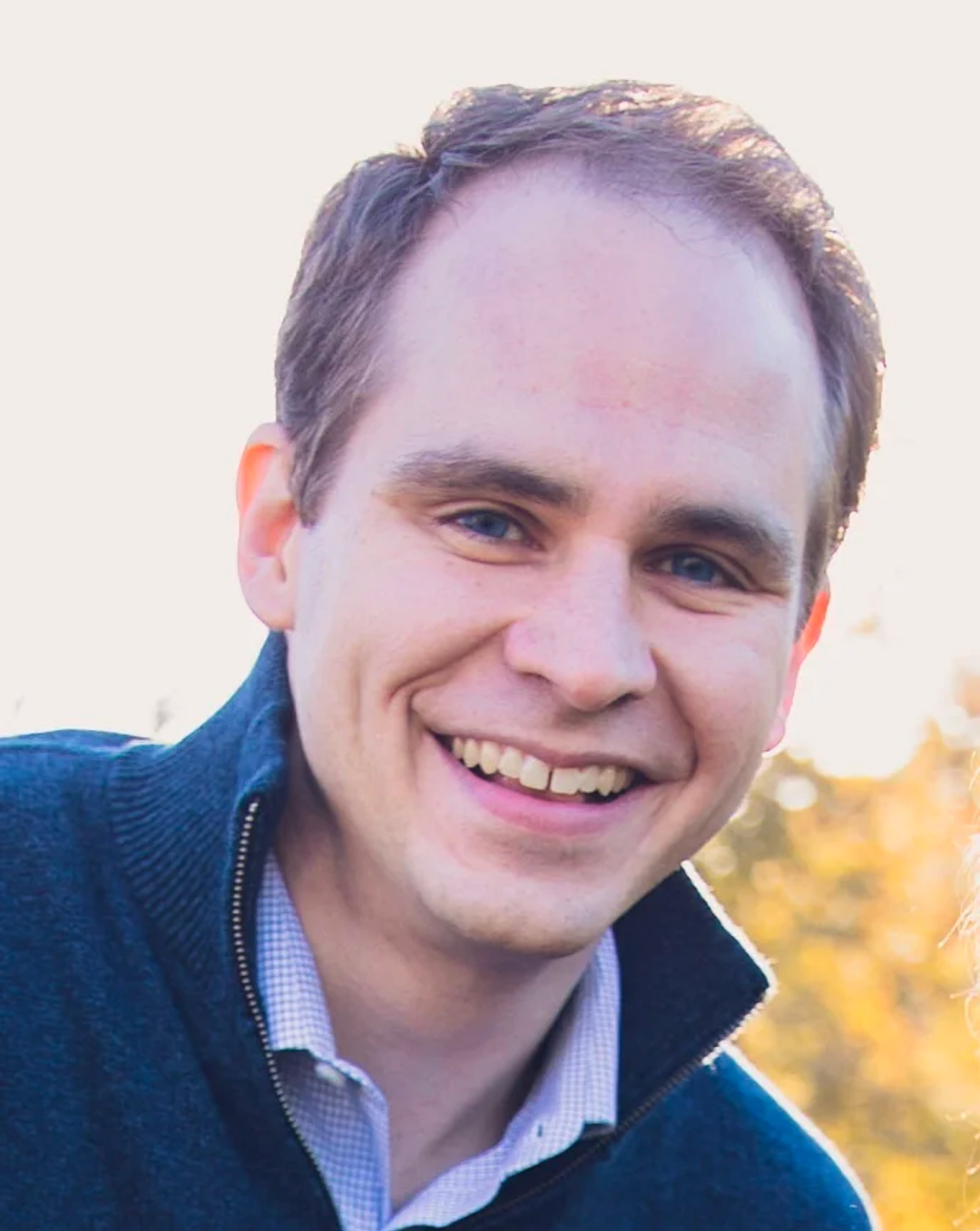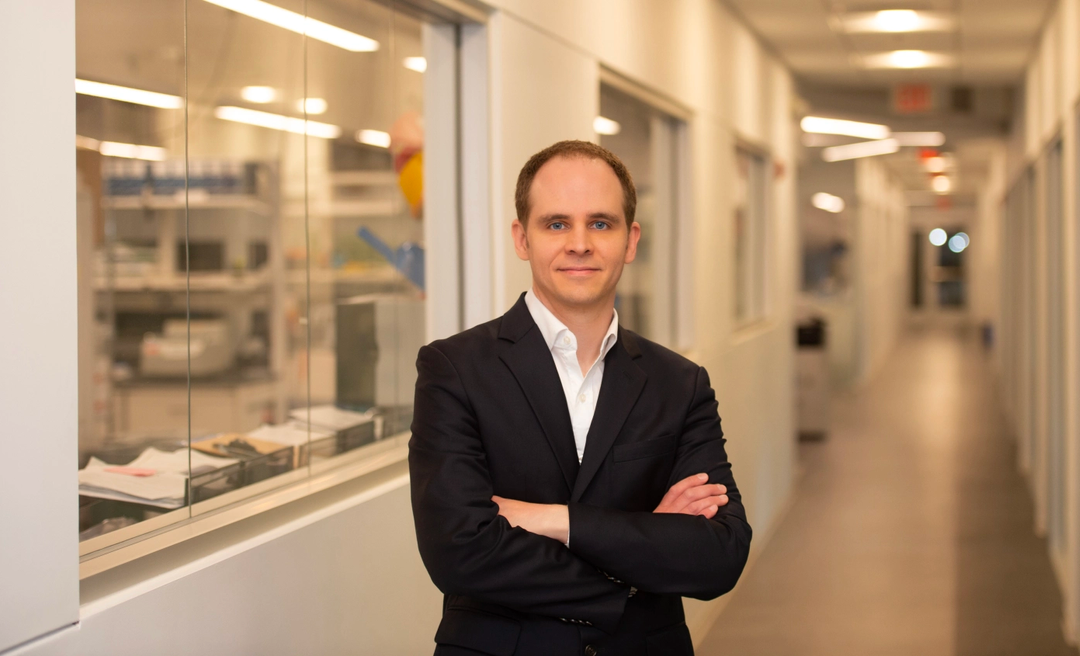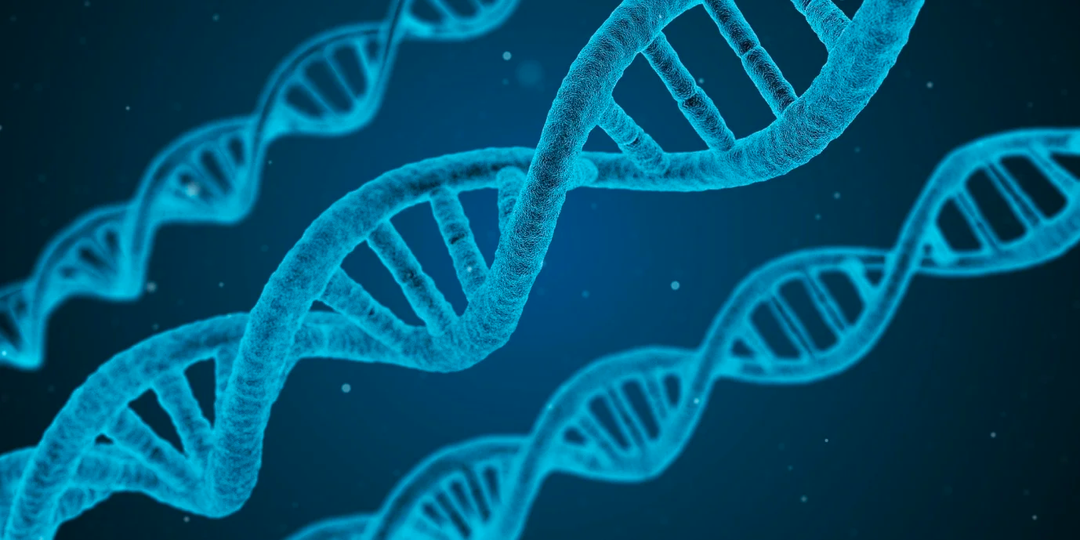Meet Kyle Retterer
Chief Technologist
Kyle Retterer is the Chief Technology Officer at GeneDx, a genetic diagnostics company. Retterer has been with GeneDx for 11 years and has helped build the technological platform that enables geneticists to go from sequencing individual genes to performing whole genome sequencing.
STEM to the Sky
Sep 25, 2021
- Were you always interested in STEM as a child?
- What are the current goals of GeneDx as a company?
- How has genome sequencing technology evolved over the years?
- What are your main responsibilities as the Chief Technology Officer at GeneDx?
- How did you build your way up to becoming the CTO?
- What is the most rewarding aspect of what you do?
- Aside from the technical skills, what skills would you say are important for a role like yours?
- Do you have any recommendations for students who are interested in learning more about genomics or bioinformatics?
- What future advancements do you see happening in the field of genome analysis?
- Why do you love working in STEM?
Were you always interested in STEM as a child?
I was always interested in STEM, although I had zero interest in biology and genetics. My undergrad was in physics. I started a PhD in physics too, but I really was burnt out and not interested in the problems I had gotten myself into. I took some time off and taught high school for a couple years. I actually got a degree from culinary school and ran a bread bakery for several years. That didn’t really lead anywhere career wise or have anything directly to do with what I’m doing today, but it was a really important detour that, in a lot of ways, helped me find the right fit for me and my passion in science.
I ended up going back because I missed doing science. Physics is definitely a very mature field with very narrow and in-depth areas of research. I loved physics and understanding how things work, but there weren’t a lot of really exciting discoveries happening every day. I was looking for a scientific field where there was a lot of data that we don’t know much about yet. Genomics was the perfect fit for that.
For me, it ended up being a really good time to get into genomics because the laboratory technology was changing to give us access to more data than we’ve ever had before. I was able to take the skills that I had on the computer science, math, and computational side and apply them to a totally different problem of genomic data that I honestly had no interest in before. It turns out that it’s a really interesting problem and not so different from physics in a lot of ways.

(Credit: Kyle Retterer)
What are the current goals of GeneDx as a company?
There are only about 1,000 clinical geneticists in the US. It’s a particular medicine that you have to get licensed and boarded for. Only ~40 people graduate every year with the extra training, but the need for genetic testing and the incidence of genetic disease is really significant. Current estimates are that somewhere around 2-5% of all people have a genetic disease. Not all genetic diseases are very severe, but they do have implications for your health, either in childhood or adulthood or later in life. There’s a real mismatch in terms of numbers there. The big challenge now is to expand access to genetic testing and genetic information and make it a more integrated part of healthcare in order to benefit everyone.
There are many things you can do with genetic information. If you’re prescribing a lot of medications, there are genetic implications for dosage and contraindications. Genetic information can also be useful for assessing disease risk. We’re trying to go from the point where genetics is this narrow funnel you only get if you live near a big city and have access to an academic medical center to something that becomes a routine part of medical practice. Now that the technology has gotten cheap enough and we’ve learned so much, I’m hoping that we will see a big change in the next five years.
Right now, we’re dealing with a lot of people at the tail-end of the medical journey who have had problems for many years and are now looking for a diagnosis to understand what’s wrong. I think we have the opportunity to get ahead of that and actually start to prevent, treat, and manage disease earlier on and improve the health of the entire population as a result.
How has genome sequencing technology evolved over the years?
Gene sequencing has been around for a while. The original form of sequencing was Sanger sequencing, which is what the Human Genome Project did 20 years ago. Watching it happen was what got me interested in genomics. The way the scientists did that was with hundreds of sequencing machines in a room. Each machine could only read a fragment of DNA about 500 nucleotides long at a time. The entire human genome has about 3.3 billion nucleotides, and it’s double stranded. It’s a lot of information. One machine could only run one sample at a time, and it would take a few hours to run. They were able to sequence individual pieces and then computationally put them back together by aligning the ends and piecing together bigger assemblies of this fragmented genomic information. It’s like if you put a book through a paper shredder and tried to reassemble the book from all the shreds of paper. It would be very tedious and complicated, but you could do it.
The sequencers worked via sequencing by synthesis. They would reread the oligonucleotide, one base at a time, and there are fluorescent tags that light up depending on whether it’s A, T, C, or G. They’d read those colors, and it becomes sort of a movie or picture of the DNA.
What changed about 10 years ago was a technology called next generation sequencing. Oversimplified, it’s a chip-based technology. Rather than reading one piece of DNA at a time, you’re taking pictures of a plate full of millions of DNA fragments all at one time with a single instrument. There’s optical computation that deconvolutes that fuzzy image into individual DNA pieces. You still get short data out of it and you still have to reassemble it, but you’re able to do it at a much more massive scale and much lower cost.
The cost of doing the Human Genome Project for one genome was around 150 million dollars. Now, we can run whole genome sequencing for under $1,000 for one person. We think we’re getting to the point in the next few years where sequencing a genome will only cost about $100 per person. At that point, you really open up this idea: why doesn’t everyone just have their genome sequenced?
"Why doesn’t everyone just have their genome sequenced?”
Kyle Retterer
What are your main responsibilities as the Chief Technology Officer at GeneDx?
Simply put, I am the head of research and product development. I lead a group of 45 scientists and engineers. We’re pretty multidisciplinary but more on the analytical side of things.
We take all of the raw genomic data that comes off of sequencing instruments and process it to find the genetic variants that exist in a given person. We then take that variant data and determine what it means clinically, meaning we determine if a variant is benign, pathogenic, or somewhere in the middle. Often, we process and interpret data for doctors one case at a time.
There’s an endless stream of new variants and diseases that we’ve never seen before. As we aggregate more and more data over time, we can meta-analyze that data to look for larger patterns and discoveries. Over the last five years, we’ve actually discovered hundreds of novel disease genes by looking at statistical results within that data set. For example, there’s a particular mutation that can happen in DNA called a de novo mutation. De novo means “from nothing”, so de novo mutations occur spontaneously and aren’t inherited from either parent.
If we’re talking about a childhood disease, we actually sequence the child along with the parents whenever we can because that informs how we interpret the information. We would do a comparison between a child’s DNA and the parents’ to identify a variant present in a child that wasn’t present in the parents. If it’s a gene that we already know about and the mechanism of disease and the phenotype fit the disease, then we would interpret that variant as being disease causing.
Right now, there are a few thousand genes that have definitive links to human disease. There’s over 10,000 genes that have no known link to human disease. We sort of know what they do biologically, but no one has ever proved that mutations in this gene cause this particular phenotype and mechanism. There are different kinds of mutations you can have in DNA. Some of them cause a gain of function (alters protein function). Some cause a loss of function (reduces the protein expression or completely destroys the protein). When we sequence hundreds of thousands of people and collect both the genomic and phenomic data, we can correlate across the larger set and look for recurrent patterns.
Over the last several years, I’ve worked on trying to take all this data that we’ve gathered and what can we learn from it to improve diagnosis for our patients and to advance our general understanding of genetic disease.

(Credit: Kyle Retterer)
How did you build your way up to becoming the CTO?
I started as a bioinformatics engineer, which is basically a software engineer who works on biology problems. To some extent, I got to GeneDx at the right time and had the right skills, so it just was an opportune moment. GeneDx was a fairly established company at the time and probably had about 200 employees. They were doing a fair bit of genetic testing, but this idea of next generation sequencing and bigger gene panels was pretty new at the time. There was real opportunity to build the computational and analytical infrastructure around all of that.
The first couple years, I spent a lot of time building panels, which are collections of a few dozen genes where we amplify just the DNA from those to analyze. Pretty quickly, I shifted my focus to exome and then genome analysis before it was really a feasible thing. I played the long game of thinking about where technology was going. Fortunately, I made the right bet, and as that grew, I grew along with it. I was also really able to leverage the different backgrounds that I had. Not being a genetics/biology person and being in this field was really beneficial for me because I had a different perspective and view on some of these problems.
What is the most rewarding aspect of what you do?
At the end of the day, the things I’m doing are actually helping people and having a positive impact on their lives. In the earlier days of doing exome sequencing, I was working on some algorithms to figure out how to more efficiently analyze the data. I was flipping through some cases myself and found a child who was lapsing into comas, but they didn’t know why. I had built this algorithm that looked at the data, and flashing right in front of me was the answer. There was a clear intervention that you could do for this kid, which was dietary modification. I immediately went down the hall, talked to our clinical geneticists, and said, “I know this isn’t my area, but you’ve got to call this physician right away because I’m pretty sure I’m right about this.” They did, and the kid was okay.
That was probably my most hands-on moment early on and not something I expected at all being a data scientist. The algorithms I’ve built actually have an impact on a daily basis for people and that’s a really cool feeling.
It’s also really fun and exciting just to discover new things. It’s the joy of science in and of itself.
Aside from the technical skills, what skills would you say are important for a role like yours?
I. Communication is hugely important. Communication is a two way street. You have to be able to understand people and also explain what your thoughts are. To be honest, a lot of scientists are not very good at communication. They’re good at putting their heads down at their desk and solving problems. But, you get way more done if you have a team of people working together and communicating. These days, it really takes a whole bunch of people with different skills coming together to solve problems.
II. Think outside of your sphere and try to see things from other people’s perspectives. Understand the different approaches and different ways of looking at a problem.
III. Make long term choices rather than short term choices. Sometimes, you will have to make a short term choice because there’s a deadline associated with it. But in general, for my career, I’ve always tried to play the long game and think about where things are going two or five years from now.

(Credit: Shutterstock)
Do you have any recommendations for students who are interested in learning more about genomics or bioinformatics?
The NIH (National Institutes of Health) or the National Human Genome Research Institute (NHGRI) have good resources. There’s an endless wealth of stuff, whether you’re interested in the clinical side, the data side, or the laboratory/molecular side.
Don’t be afraid to do something different for a while. I’d encourage people to not feel like they have to stay on the straight and narrow path. Feel comfortable taking detours or taking a year off. There are tons of opportunities out there in the world.
Always try to think outside of your specialty and your narrow view and understand the other side of things. To be honest, I had zero interest in clinical practice and medicine. I had never ever wanted to be a doctor or go to medical school. Now, here I am doing all kinds of clinical genetic stuff. That’s not something I expected to be doing going in, but being able to pull together these different things and being a multidisciplinary person ended up being really beneficial.
What future advancements do you see happening in the field of genome analysis?
The sequencing we do is primarily in short fragments. Now, there’s technology that lets you read much longer fragments of DNA, which actually resolves a lot of things that we can’t do very accurately with the shorter fragments. I think genome sequencing is going to become less expensive and more accessible over time. Genetic information is going to be a more routine part of healthcare.
10 years from now, maybe sooner, parents will have the option of doing gene sequencing on newborns to look for genetic defects to help prevent and manage disease early on in life. Right now, when babies are born, they do a heel prick test and screen for about 35 metabolic and other treatable disorders. Genetic information lets you test for thousands of disorders that are potentially not always treatable, but knowing ahead of time can help with management of the disease and give better outcomes to those kids. I think this move towards preventative medicine is going to be the biggest change we’re going to see in genetics.
Why do you love working in STEM?
I love working in STEM because it keeps me interested and engaged day to day. If you pick the right field for you, there’s an endless number of problems to solve, questions to answer, and ways that you can make the world a better place. That’s the real power of STEM: it’s a tool for both understanding and improving the world.